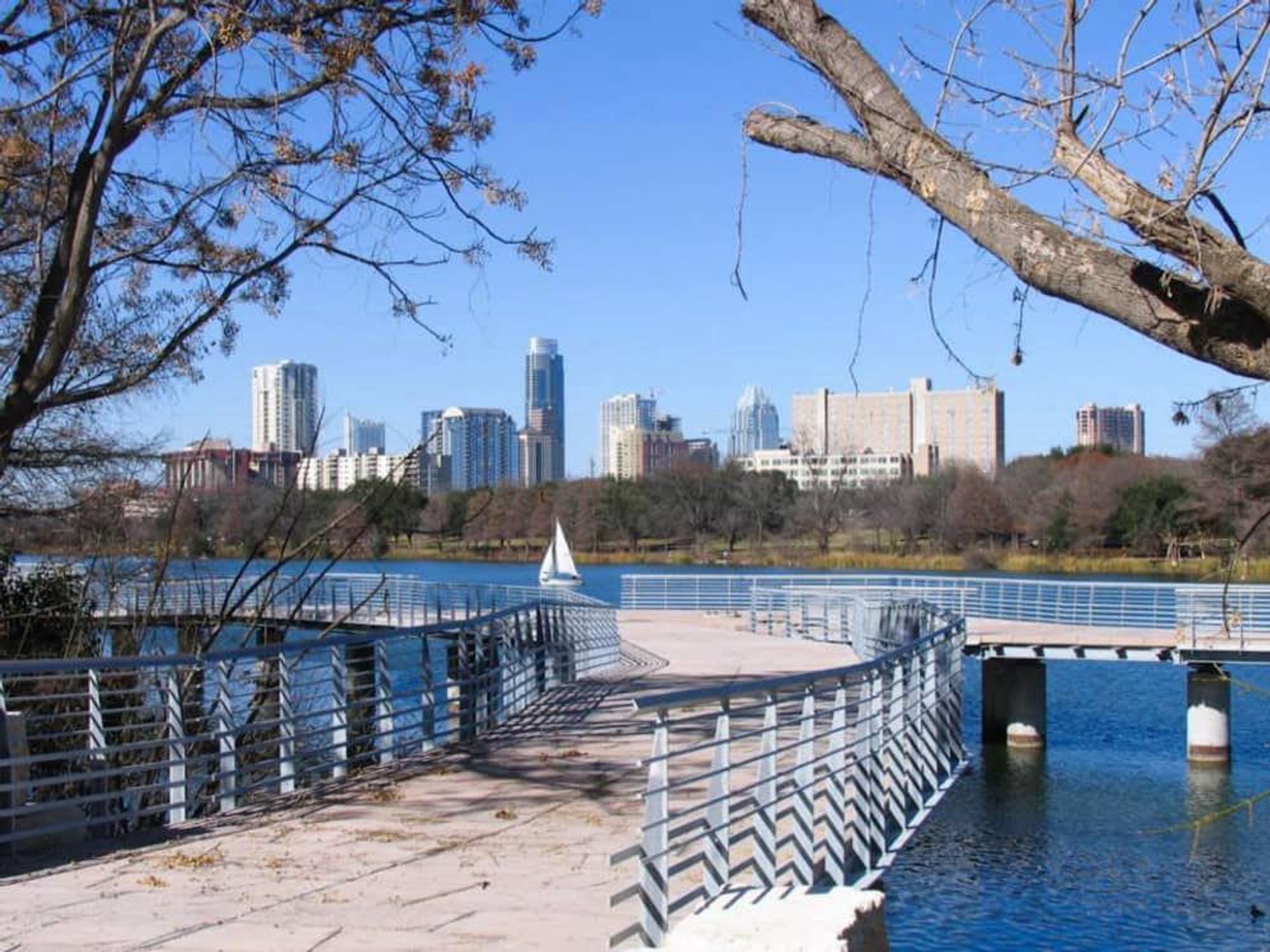The Trail Continues
Austin's Trail Foundation rebrands and becomes primary steward of beloved Butler Trail

The Trail Conservancy will take over the majority of daily operations from the City of Austin.
The Trail Foundation has been one of the central preservers of Austin’s outdoorsy culture for nearly 20 years, caring for a crucial piece of public land, the Ann and Roy Butler Hike-and-Bike Trail and Boardwalk along Lady Bird Lake. It is the threshold from upper to lower Austin, and an organic gathering place for just about every Austinite at some point in their city life.
On September 22, TTF announced big news that may sound little: The organization formalized its partnership with the City of Austin, and is changing its name to the Trail Conservancy (TTC) to better reflect its new duties. This news happens to come on the heels of the Butler Trail’s 50th anniversary in December of 2021.
The formal partnership means the city is handing over almost all control of the Butler Trail to TTC, which had previously focused on trail expansions and “enhancements,” special projects like installing floating wetlands and unique play structures. Now, an estimated 75 percent of park maintenance is turned over to TTC, including everyday maintenance like trash pickup, water fountain maintenance, shoreline restoration, irrigation, and more.
“The city came to us about four years ago and asked us to join them in this formal partnership. They're very honest about this: They don't have the funding they need to really well care for and conserve the park systems that they have throughout the entire city,” says TTC CEO Heidi Anderson. “The city puts in somewhere … under $1 million a year into this particular park and trail. And our budget this year alone is $6 million.”
Such a wide budget discrepancy may come as a surprise, but TTC is donor-funded and does not have to split its resources across multiple parks. Citizens expect the city to use their taxes in part to fund these projects, but can’t specify how beyond a vote or petitioning the City Council. Donors to TTC are sure their money is going back into this particular park. Having a team fully dedicated to this park also makes fundraising and problem solving a lot more straightforward.
“Our standards of operations may be able to be a little bit stronger than the city's can be, just because their resources are stretched so thin,” says Anderson. “So eventually you will start seeing the Trail Conservancy crews out there on a more regular basis, being present in the space and managing the park land itself. And in this particular area, because we exist, they can reallocate their efforts to other potentially underserved parks.”
One of TTC’s goals going forward is to host more community events, for more than just fundraising. It already has three volunteer events on the trail per week, which may increase. It wants to host free event series for fitness, music, and scavenger hunts on the trail. So early in the transition, it is still in a brainstorming phase, and is soliciting stories from community members, which can help calibrate the organization with how people already use the trail and what they value on it.
To tell a story about the Butler Trail, visit thetrailfoundation.org.

 Beet and citru salad at Moderna. Photo by Brianna Caleri
Beet and citru salad at Moderna. Photo by Brianna Caleri